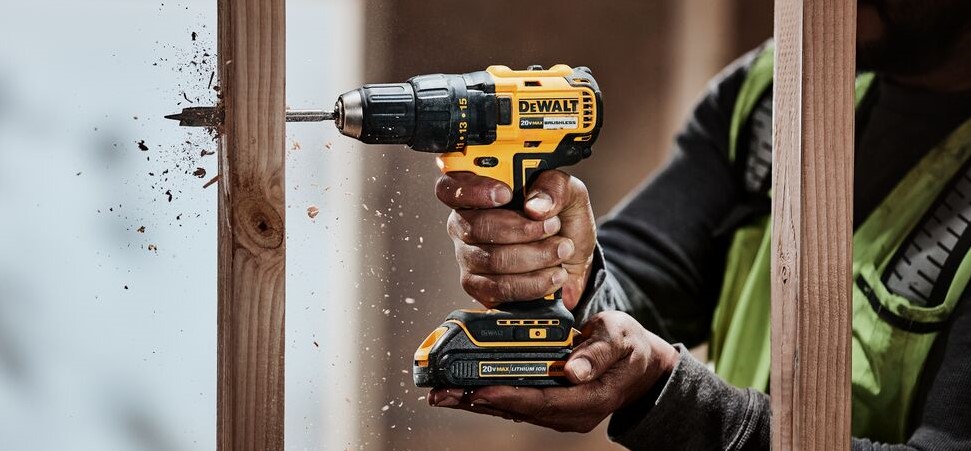When tackling a DIY project or home repair, knowing the right drill bit size for your screws can make all the difference. If you’re working with a #6 screw, choosing the correct drill bit size ensures a snug fit and prevents damage to your materials.
Understanding the relationship between screw size and drill bit size is crucial for a successful outcome. A bit that’s too small can cause stripping, while one that’s too large might lead to a loose connection. In this guide, you’ll discover the ideal drill bit size for #6 screws and some handy tips to help you achieve the best results in your projects.
Understanding Screw Sizes
Selecting the correct size drill bit for screws plays a critical role in ensuring secure fastenings. Knowledge of screw sizes helps you achieve better stability and prevents material damage.
The Importance of Choosing the Right Drill Bit
Choosing the right drill bit size affects the fit of screws in materials. A correctly sized bit allows screws to drive in smoothly without stripping, while an incorrect size can lead to complications. Using a bit that’s too small causes excessive friction, leading to damaged screws or breakage. On the other hand, using a bit that’s too large compromises the grip, causing screws to loosen over time.
Common Screw Sizes and Their Uses
Screw sizes vary widely, but some common sizes include:
- #4 screws: Suitable for light tasks, such as attaching small brackets or hinges.
- #6 screws: Ideal for general household applications, including fastening wood and drywall.
- #8 screws: Often used for structural tasks, like securing heavy fixtures and cabinets.
- #10 screws: Commonly applied in woodworking and construction, effective for thicker materials.
Understanding the appropriate size for your project ensures better results and enhances the longevity of your installations.
What Size Drill Bit for 6 Screw?
For #6 screws, a drill bit size of 1/8 inch (0.125 inch) is typically recommended. This size provides a snug fit, reducing the risk of screw damage and ensuring a secure hold.
Recommended Drill Bit Size
A 1/8 inch (0.125 inch) drill bit is ideal for pilot holes for #6 screws. It allows the screw to bite into the material without excessive friction. In softer materials like pine or plywood, consider using a slightly smaller bit, like 7/64 inch (0.109 inch), to allow for better grip without splitting. For harder materials like oak, a 1/8 inch pilot hole works well to maintain control while driving in the screw.
Factors Affecting Drill Bit Choice
Several factors affect your choice of drill bit size for #6 screws:
- Material Type: Different materials require different bit sizes. Softer woods may let you use a smaller bit, while harder woods need the standard 1/8 inch size.
- Screw Length: Longer screws may need a larger pilot hole to ease installation and prevent breakage.
- Screw Type: Wood screws, sheet metal screws, and machine screws often require different pilot hole sizes.
- Thickness of Material: Thicker materials can alter the required drill bit size to ensure proper installation.
- Environmental Conditions: In damp or humid conditions, materials can swell, potentially necessitating a larger hole for proper fit.
Understanding these factors helps you select the best drill bit size for a successful project involving #6 screws.
Tips for Drilling with Screw Sizes
Selecting the right techniques for drilling enhances project efficiency and outcome. Here’s how to prepare your materials and improve drilling accuracy effectively.
Preparing the Material
- Choose the right surface: Ensure the material surface is clean and free of debris. This helps the drill bit penetrate smoothly.
- Measure and mark: Use a tape measure to determine exact screw placement. Mark these locations clearly with a pencil or a center punch.
- Clamp securely: Use clamps to stabilize your workpiece. This reduces movement during drilling, enhancing precision.
- Pre-drill pilot holes: For hardwoods or thicker materials, pre-drilling pilot holes aids in reducing splitting and improves screw insertion.
Techniques for Accurate Drilling
- Use proper drill speed: Adjust your drill speed based on material type. Slower speeds work better for harder materials, allowing for cleaner holes.
- Keep the drill straight: Maintain a perpendicular angle to the material surface. This ensures that the screw enters correctly and avoids damaging the material.
- Apply consistent pressure: Apply even pressure while drilling. Too much force can cause overheating or breakage of the drill bit.
- Withdraw to clean: Periodically pull the drill bit out while drilling to clear out debris. This prevents build-up that may affect drilling efficiency.
Conclusion
Choosing the right drill bit size for #6 screws is crucial for achieving a secure and lasting installation. By using a 1/8 inch bit or a 7/64 inch bit in softer materials you can ensure a snug fit that minimizes the risk of damage.
Remember to consider the type of material and the specific application to enhance the effectiveness of your project. With proper preparation and technique you’ll not only improve the accuracy of your drilling but also the overall quality of your work. Following these guidelines will lead to successful outcomes in your DIY projects and home repairs.

Hi, I’m Md Rofiqul, a gardening enthusiast who loves spending time in the garden and backyard. I enjoy caring for plants, growing flowers and vegetables, and creating a green space that feels peaceful and refreshing. Gardening is more than just a hobby, it’s a passion that connects me to nature and brings joy to my daily life. Living with plants inspires me to embrace simplicity, patience, and sustainability while making every day more colorful and rewarding.
